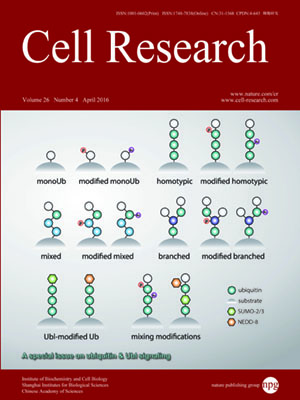
Volume 26, No 4, Apr 2016
ISSN: 1001-0602
EISSN: 1748-7838 2018
impact factor 17.848*
(Clarivate Analytics, 2019)
Volume 26 Issue 4, April 2016: 499-510 | Open Access
REVIEWS
Bacteria-host relationship: ubiquitin ligases as weapons of invasion
Timurs Maculins1,2, Evgenij Fiskin1, Sagar Bhogaraju3 and Ivan Dikic1,3
1Institute of Biochemistry II, Goethe University Frankfurt, Theodor-Stern-Kai 7, 60590 Frankfurt am Main, Germany
2Fraunhofer Institute of Molecular Biology and Applied Ecology IME, Project Group Translational Medicine and Pharmacology TMP, Theodor-Stern Kai 7, 60596 Frankfurt am Main, Germany
3Buchmann Institute for Molecular Life Sciences, Max-von-Laue-Strasse 15, 60438 Frankfurt am Main, Germany
Correspondence: Ivan Dikic, E-mail:(dikic@biochem2.uni-frankfurt.de)
Eukaryotic cells utilize the ubiquitin (Ub) system for maintaining a balanced functioning of cellular pathways. Although the Ub system is exclusive to eukaryotes, prokaryotic bacteria have developed an armory of Ub ligase enzymes that are capable of employing the Ub systems of various hosts, ranging from plant to animal cells. These enzymes have been acquired through the evolution and can be classified into three main classes, RING (really interesting new gene), HECT (homologous to the E6-AP carboxyl terminus) and NEL (novel E3 ligases). In this review we describe the roles played by different classes of bacterial Ub ligases in infection and pathogenicity. We also provide an overview of the different mechanisms by which bacteria mimic specific components of the host Ub system and outline the gaps in our current understanding of their functions. Additionally, we discuss approaches and experimental tools for validating this class of enzymes as potential novel antibacterial therapy targets.
10.1038/cr.2016.30
FULL TEXT | PDF
Browse 2028


